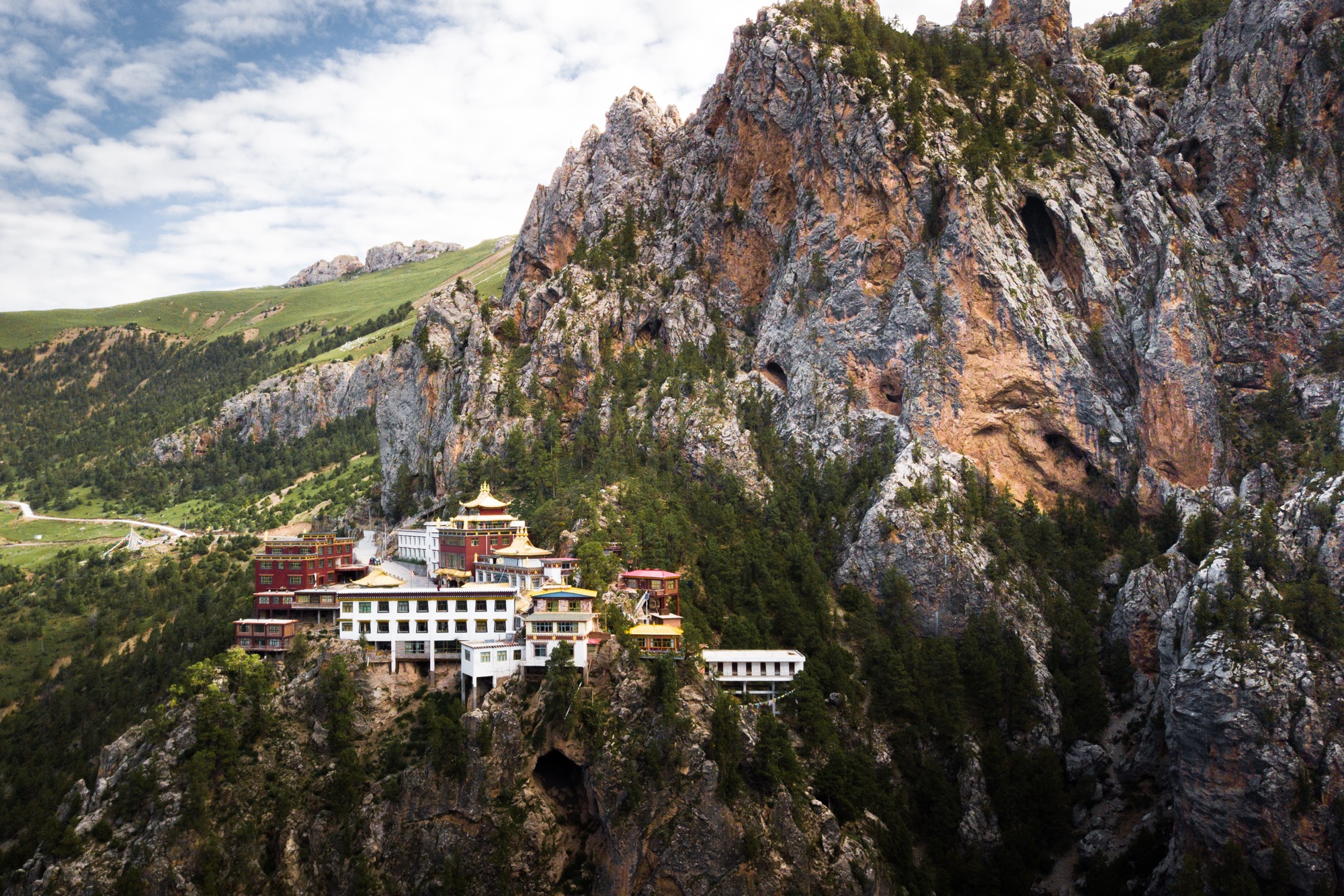China’s attempt to create the world’s largest national park system
Conservation China is a five-part series in which environmental photographer Kyle Obermann brings us through glaciers, remote forests, and dusty villages to the gritty and stunning frontlines of Chinese conservation efforts. This is part 3. (Previously: Part 1, Part 2, Part 3.)

I flicked away two wet worm-like bodies crawling up my shoelace. Another two bloody holes on my ankle marked the spot where two leeches had recently stopped for a snack. I glanced over at my companions. Two hardy villagers now turned forest rangers were still snoring snuggly under a rocky outcrop sheltered from the drizzle.
Luckily, they later told me, June was still early for the “season of most leeches” in Shennongjia. But I was used to it already. My experience patrolling the nature reserves of the Giant Panda National Park in Sichuan the past few years had prepared me for this well enough. Comparatively, the new protected area around Shennongjia National Park, managed by the Paradise Foundation, was mild. But as I inspected my wounds, I could not help but miss the dry, thorn-less, and leech-less plateaus of Sanjiangyuan.

Since China’s 2015 announcement of a new national pilot park system beginning with Qinghai Province’s Sanjiangyuan National Pilot Park, China has created 10 new pilot national parks, ranging from Hainan, Heilongjiang, and Fujian to the Tibetan Plateau. Combined, these new parks already cover a land area two-thirds the size of the U.S. park system, established in 1916. And yet, China’s national park system looks nothing like the U.S. model — and that’s by design.
In the last decade, China’s protection of natural resources and lands has been officially guided by the principles of a “protected area system with national park as the main body” and “protected areas with Chinese characteristics.” The developing national park system in China is far from the system of backcountry passes and campsites many think of in Western countries. The main focus of China’s national park system is to streamline and consolidate governance of already protected areas, strengthen wildlife corridors and core habitats, and advance Xi Jinping’s fúpín 扶贫 poverty alleviation strategy.
Traditionally, China’s governance and definition of protected areas has spread across nature reserves, forest parks, scenic areas, wetland parks, and other categories with no singular management system, confounding attempts to effectively manage the habitat of a connected biome or species — like that of the giant panda. What is now the singular Giant Panda National Park, overseen by the newly created National Park Administration, was actually the conglomeration and streamlining of 77 different protected areas across six different categories originally split across national, provincial, and county levels of governance. The situation is similar for other parks across the country. The Chinese national park system is much less an addition of new protected areas as it is an updated and streamlined management scheme for key ecosystems whose protection was once hampered by bureaucratic mix-up.
In an aggressive push to build human-disturbance-free wildlife corridors and habitats, many of the new national parks are engaging in a process called “ecological relocation” for those who live inside the “core zones” of new parks. In the Qilian Mountains National Park on the border of Gansu and Qinghai, the goal is to “voluntarily” relocate most or all of the 54,665 people living in the core zone by 2025. While news of relocating 170,000 people inside the Giant Panda National Park caught eyes in 2017, the official number for relocation was only 5,553.
In Sanjiangyuan, the official policy only is for the current nomadic herding population “not to increase,” and instead provide skills training by the government to encourage nomadic people to move to and work in townships or cities and reduce impact on the environment. Further, each national park has its own standards for environmental improvement for 2020 and 2025 based on past baselines, which range from concentration of flagship species to forest cover and number of mines within core zones. At the end of 2019, the Chinese government published the gains made on some of these efforts, including 25 new wildlife corridors constructed in Shennongjia National Park, over 4,300 square kilometers of illegally used land restored in Wuyi Mountains National Park, and 144 mines removed from Qilian Mountains National Park.
The national park project also emphasizes reducing poverty and raising income levels inside the parks’ borders. This is often based on a system that creates four different “function zones” within the parks, from the most stringent outlawing human activity to the more lenient one designed to spur ecological tourism and public visits. A new ecotourism project in Sanjiangyuan National Park was reported to have received 98 “ecological experience” visits by domestic and international tourist groups, contributing over 1 million yuan ($140,000) to the local economy.
Guanba, a village and “small-protected area” inside the Giant Panda National Park, is working with the Chinese conservation NGO Shanshui and finance giant Ant Financial to not only develop ecotourism, but sustainable sales of traditional local handmade crafts and honey. In fact, almost every nature reserve I have visited inside a national park is developing — if it can — a subsidy-supported program to sell local honey. How the market will react, only time will tell, but government administrations, NGOs, and companies are mobilizing across to China to use the national parks’ models to implement and support Xi’s aggressive poverty alleviation efforts.
Despite quick progress in the last five years since the announcement of the pilot park project, there are still many gaps to be filled. Reports by the Chinese Academy of Sciences point out that many critical species still have no protected areas in China, there are still sizable human populations living in nature reserves, the legal structure is incomplete and unclear, some land rights issues are unresolved, and there is a lack of expertise and funding in protected areas. Another report describes the discovery by remote sensing satellites from the Ministry of Environment that some funds were being misused by national parks to develop public infrastructure (damaging the environment along the way).
Optimistically, as these reports are from China’s top institute and body, it is likely that government officials are paying attention. The creation of the new National Park Administration in 2018 seems to be a big step in addressing many of the issues that exist. Regardless, the world’s most populous country is creating a national park system that is on track to become that largest in the world. How the pilot phases of each park reach completion in 2020 will be telling as to the future prospects of the system as a whole.



Conservation China is a five-part series. Previously:






